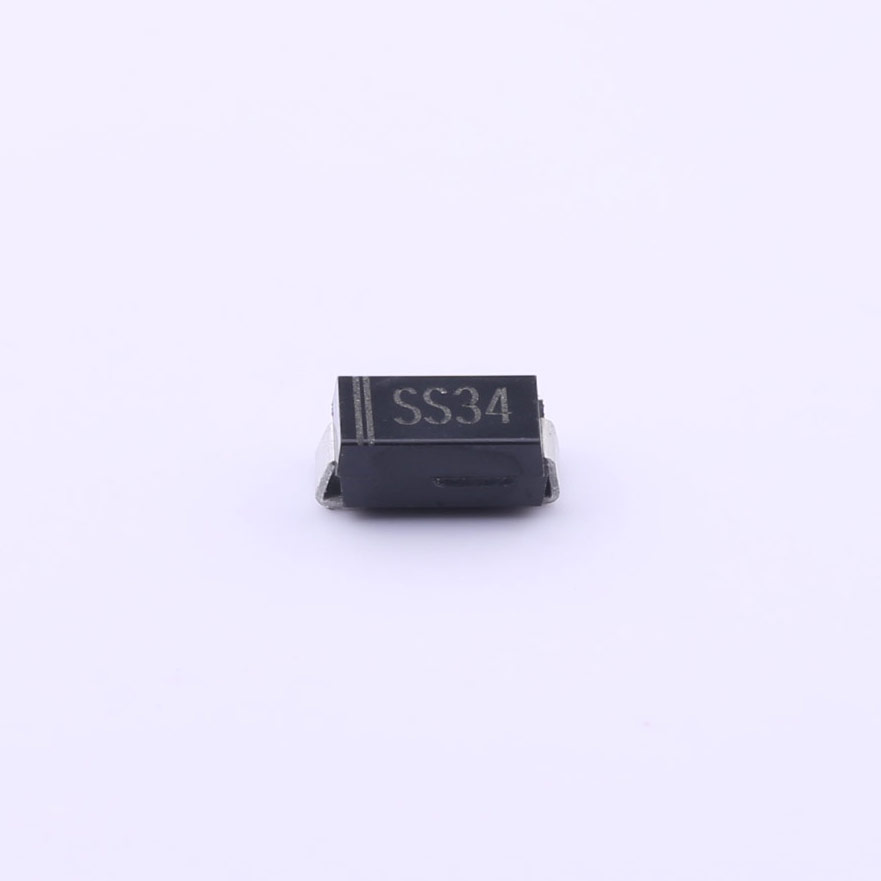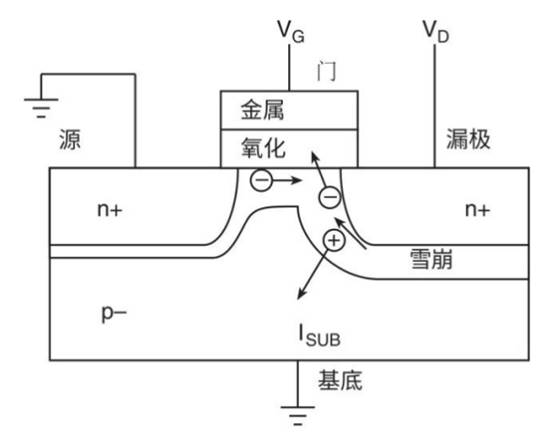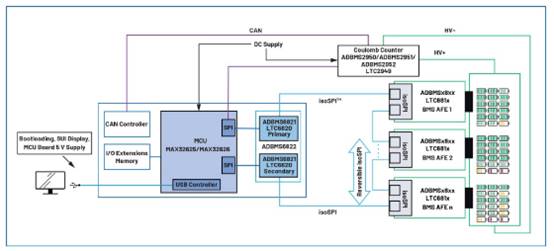一 前语
本文旨在将 arm-linux 在 skyeye 上树立起来,并在 arm-linux 上能成功 mount
NFS 为方针, 终究咱们能在 arm-linux 里运转咱们自己的应用程序. 其实在 skyeye 上移
植 arm-linux 并非难事,网上也有不少材料, 仅仅大都遗失细节, 致使纤细之处卡壳,所以本
文力求详实清析, 期望能对咱们有点用途。
二 装置 Skyeye
咱们选定 skyeye 的 1.2.4 这个版别, 为了能让它上面运转的 arm-linx 能挂接 NFS,我
们需求修正 device/net/dev_net_cs8900a.c (修正后的文件在附件里), 再编译 skyeye。
操作如下, 先解压源码包:
#tar xzf skyeye-1.2.4_Rel.tar.gz
#cd skyeye-1.2.4
请用附件里的 dev_net_cs8900a.c 替换 device/net/dev_net_cs8900a.c 后履行编译:
#make NO_DBCT=1 NO_BFD=1
编译完后生成的 skyeye 在 binary 下,将其仿制至 /usr/local/bin/ 下:
#cp binary/skyeye /usr/local/bin
三 编译内核
咱们选定 linux-2.6.14.tar.bz2 这个版别, 穿插编译器用 arm-linux-gcc 3.4.1 (对
2.6 内核用 3.4 以下的版别编译常常会呈现问题)。操作过程如下:
1.假定内核源码包在 /root 下, 首要解压源码:
#cd /root
#tar xjf linux-2.6.14.tar.bz2
2.进入内核目录:
#cd linux-2.6.14
修正此目录下的 Makefile, 将
ARCH ?= $(SUBARCH)
CROSS_COMPILE ?=
改为
ARCH ?= arm
CROSS_COMPILE ?= /usr/local/arm/3.4.1/bin/arm-linux-
3.生成默许的内核装备文件(for s3c2410):
#make smdk2410_defconfig
4.为内核增加 cs8900(见附件) 网卡驱动,以支撑 NFS 挂接:
(1)仿制 cs8900 驱动到 drivers/net/arm 目录
#cp cs8900.c drivers/net/arm
#cp cs8900.h drivers/net/arm
(2)修正 drivers/net/arm 目录下的 Kconfig 文件, 在终究增加:
config ARM_CS8900
tristate “CS8900 support”
depends on NET_ETHERNET && ARM && ARCH_SMDK2410
help
Support for CS8900A chipset based Ethernet cards. If you have a network
(Ethernet) card of this type, say Y and read the Ethernet-HOWTO, available
from as well as .To compile this driver as a module, choose M here and read.
The module will be called cs8900.o.
注:在运转 make menuconfig 指令时就会呈现: [ ] CS8900 support 这一选项
(3)修正 drivers/net/arm 目录下的Makefile文件,在终究增加如下内容:
obj-$(CONFIG_ARM_CS8900) += cs8900.o
注:2.6 版别内核的 Makefile 也与 2.4 的有所不同, 增加以上句子, 就会使内核在
编译的时分依据装备将cs8900A的驱动程序以模块或静态的方法编译到内核傍边。
(4)修正 arch/arm/mach-s3c2410/mach-smdk2410.c
在此文件中找到 smdk2410_iodesc[] 结构数组,增加如下如下内容:
{vSMDK2410_ETH_IO,pSMDK2410_ETH_IO, SZ_1M, MT_DEVICE}
修正之后变成:
static struct map_desc smdk2410_iodesc[] __initdata = {
/* nothing here yet */
/* Map the ethernet controller CS8900A */
{vSMDK2410_ETH_IO,pSMDK2410_ETH_IO, SZ_1M, MT_DEVICE}
};
并且增加一个头文件引证:
#include
(5)在 include/asm-arm/arch-s3c2410 目录下创立文件 smdk2410.h
#ifndef _INCLUDE_SMDK2410_H_
#define _INCLUDE_SMDK2410_H_
#include
#define pSMDK2410_ETH_IO 0x19000000
#define vSMDK2410_ETH_IO 0xE0000000
#define SMDK2410_ETH_IRQ IRQ_EINT9
#endif
5.参照http://skyeye.wiki.sourceforge.net/Linux修正内核文件
修正 include/asm-arm/arch-s3c2410/map.h
#define S3C2410_CS6 (0x30000000UL)
to
#define S3C2410_CS6 (0xC0000000UL)
修正 include/asm-arm/arch-s3c2410/memory.h
#define PHYS_OFFSET (0x30000000UL)
to
#define PHYS_OFFSET (0xC0000000UL)
6.裁剪/定制内核
(1)#make menuconfig
(2)设置内核发动参数
Boot options —> Default kernel command string:
mem=32M console=ttySAC0 root=/dev/ram initrd=0xc0800000,0x00800000 ramdisk_size=8192 rw
(3)设置 CS8900 的支撑
Device Drivers —>
Network device support —>
Ethernet (10 or 100Mbit) —> [] CS8900 support
选中 [*] CS8900 support
(4)设置 initrd 的支撑
Device Drivers —> Block devices —> [ ] RAM disk support
下面三项有必要设置:
1.保证 RAM disk support 被选中
2.相应的将默许的 (4096) Default RAM disk size (kbytes) 改成 8192;
3.Initial RAM disk (initrd) support 一定要选中, 牢记!
(5)设置 NFS 的支撑
File systems —> Network File Systems —>
至少保证下面两项被选中:
[*] NFS file system support
[*] Provide NFSv3 client support
(6)设置 ROM file system 的支撑
File systems —> [*] ROM file system support
保证 [*] ROM file system support 被选中
(7)设置 ext2 的支撑
File systems —> [*] Second extended fs support
保证 [*] Second extended fs support 被选中
7.编译
#make
编译完成后会有个 vmlinux 在当时目录下, 这便是咱们要的 arm-linux 内核了
四 制造根文件体系 initrd.img(Initial RAM disk)
咱们选定 busybox-1.9.2.tar.bz2 这个版别, 以静态方法编译, 即生成的 busybox 不需
要同享库的支撑就能运转。这样做咱们就不需求布署程序库了。缺陷是自己写的 arm-linux 程序在
这个根文件体系中是不能运转的,由于短少同享程序库的支撑。不过别忧虑,咱们会处理这个问题的,稍
后你将看到,经过在 arm-linux 里以挂接 NFS 的方法, 将宿主机的 arm-linux-gcc 编译器的
库文件挂到 arm-linux 的 /lib 下, 就可完美的运转咱们自己的程序了。好,一步步来,先来看看
根文件体系的制造:
1.解压源码包
#tar xjf busybox-1.9.2.tar.bz2
#cd busybox-1.9.2
2.修正 Makefile, 将
ARCH ?= $(SUBARCH)
CROSS_COMPILE ?=
改为
ARCH ?= arm
CROSS_COMPILE ?= /usr/local/arm/3.3.2/bin/arm-linux-
注:这个版别的 busybox 用 3.4.1 的 arm-linux-gcc 编译有些问题, 用 3.3.2 版则可顺畅编译。
3.定制 busybox
#make menuconfig
设置静态编译方法
Busybox Settings —> Build Options —> [*] Build BusyBox as a static binary (no shared libs)
保证 [*] Build BusyBox as a static binary (no shared libs) 被选中
4.履行 make 编译
#make
编译犯错, 信息如下:
applets/applets.c:15:2: warning: #warning Static linking against glibc produces buggy executables
applets/applets.c:16:2: warning: #warning (glibc does not cope well with ld –gc-sections).
applets/applets.c:17:2: warning: #warning See sources.redhat.com/bugzilla/show_bug.cgi?id=3400
applets/applets.c:18:2: warning: #warning Note that glibc is unsuitable for static linking anyway.
applets/applets.c:19:2: warning: #warning If you still want to do it, remove -Wl,–gc-sections
applets/applets.c:20:2: warning: #warning from scripts/trylink and remove this warning.
applets/applets.c:21:2: error: #error Aborting compilation.
make[1]: *** [applets/applets.o] Error 1
依照提示,修正 scripts/trylink, 将此文件里边有 -Wl,–gc-sections 的行都删除去,
然后从头 make
#make
仍是犯错, 信息如下:
root@hukq-desktop:~/busybox/busybox-1.9.2# make
CC applets/applets.o
applets/applets.c:15:2: warning: #warning Static linking against glibc produces buggy executables
applets/applets.c:16:2: warning: #warning (glibc does not cope well with ld –gc-sections).
applets/applets.c:17:2: warning: #warning See sources.redhat.com/bugzilla/show_bug.cgi?id=3400
applets/applets.c:18:2: warning: #warning Note that glibc is unsuitable for static linking anyway.
applets/applets.c:19:2: warning: #warning If you still want to do it, remove -Wl,–gc-sections
applets/applets.c:20:2: warning: #warning from scripts/trylink and remove this warning.
applets/applets.c:21:2: error: #error Aborting compilation.
make[1]: *** [applets/applets.o] Error 1
make: *** [applets] Error 2
修正文件 applets/applets.c 第 21 行, 将
#error Aborting compilation.
注释掉:
/*#error Aborting compilation.*/
履行 make 从头编译
#make
编译经过, busybox 被生成了, 然后履行
#make install
busybox 就被装置到默许的暂时目录 _install 下了
5.制造 initrd.img
有了 busybox 后制造 initrd.img 就简单多了,仅仅说起来比较烦琐。以指令演示如下:
创立映像文件并挂到 initrd 目录
#mkdir initrd
#dd if=/dev/zero of=initrd.img bs=1k count=4096
#mke2fs -F -v initrd.img
#mount -o loop initrd.img initrd
将增加 busybox 到此映像文件
#cd initrd
#cp -r ../_install/* .
#创立必要的目录
#mkdir proc lib etc dev root home var tmp
#chmod 777 tmp
树立设备文件
#cd dev
#mknod -m 644 console c 5 1
#mknod -m 644 null c 1 3
#mknod -m 640 ram b 1 1
#mknod -m 644 mem c 1 1
#cd ..
创立脚本文件 etc/inittab, 内容如下:
::sysinit:/etc/init.d/rcS
::askfirst:-/bin/sh
::restart:/sbin/init
::ctrlaltdel:/sbin/reboot
::shutdown:/bin/umount -a -r
::shutdown:/sbin/swapoff -a
设置此脚本履行权限
#chmod 644 etc/inittab
创立脚本文件 etc/init.d/rcS, 内容如下:
#!/bin/sh
/bin/mount -t proc none /proc
/sbin/ifconfig lo 127.0.0.1 up
/sbin/ifconfig eth0 10.0.0.2 netmask 255.0.0.0 up
hostname skyeye
mkdir /var/tmp
mkdir /var/log
mkdir /var/run
mkdir /var/lock
/bin/ash
设置此脚本履行权限
#chmod 755 etc/init.d/rcS
终究一步,履行实践的写入操作,生成 initrd.img
cd ..
umount initrd
五 运转 arm-linux
现在咱们有了内核 vmlinux, 映像文件 initrd.img, 模拟程序 skyeye, 咱们还需求一个
装备文件 skyeye.conf 进行 arm-linux 的仿真运转。
#mkdir /root/test
#cd /root/test
将 vmlinux, initrd.img 都仿制到此目录, 在此目录下树立一个 skyeye 的制造文件
skyeye.conf, 文件内容如下:
cpu: arm920t
mach: s3c2410x
# physical memory
mem_bank: map=M, type=RW, addr=0xc0000000, size=0x00800000
mem_bank: map=M, type=RW, addr=0xc0800000, size=0x00800000, file=./initrd.img
mem_bank: map=M, type=RW, addr=0xc1000000, size=0x01000000
# all peripherals I/O mapping area
mem_bank: map=I, type=RW, addr=0x48000000, size=0x20000000
mem_bank: map=I, type=RW, addr=0x19000300, size=0x00000020
net: type=cs8900a, base=0x19000300, size=0x20,int=9, mac=0:4:3:2:1:f, ethmod=tuntap, hostip=10.0.0.1
lcd: type=s3c2410x, mod=gtk
#dbct:state=on
好了,试运转吧:
skyeye -e vmlinux
看到你的 arm-linux 运转了吗 🙂
六 在 arm-linux 里运转咱们自己的程序
现在 arm-linux 在 skyeye 上跑起来了, 咱们能运转里边的指令, 但这些都是 busybox
的,是体系程序。怎样才能在 arm-linux 里运转咱们自己的程序呢? 有两种计划,咱们无妨评论一
下,择优而录之:
1.在制造根文件体系 initrd.img 的时分把咱们自己的程序加进去,比方放在 /usr/bin 里
目录下,然后从头生成 initrd.img,并用这个新的根文件体系来运转 arm-linux。其实这
是咱们的产品在 arm-linux 上发布的终究方法,但这有个缺陷: 在产品开发/调试阶段这么
做比较费事,每修正一次代码就得 build 一次根文件体系。
2.使用挂接 NFS(Network file system) 的方法,咱们拜访/履行一个网络文件体系上的文件
就像它在本地相同,明显这么做能防止第一种计划的坏处! 怎么完成呢? 随我来:
(1)在 arm-linux 的宿主机里装备 NFS Server (我用是 ubuntu,并且是在 vmware 里)
#apt-get install nfs-kernel-server
#apt-get install nfs-common
(2)修改文件 /etc/exports, 内容如下(详细需求由你而定):
/test *(rw,sync,no_root_squash)
/usr/local/arm/3.3.2/lib *(ro,sync,no_root_squash)
(3)装备宿主机的 ip
#ifconfig eth1 down
#ifconfig eth1 10.0.0.1 netmask 255.0.0.0 up
注:你的可能是 eth0, 别的 ip 地址你也可自己界说,只要能和 arm-liux 通讯
(4)重启 nfs server
#/usr/sbin/exportfs -r
#/etc/init.d/nfs-kernel-server restart
#/etc/init.d/portmap restart
注:可用 showmount -e 来验证你的装备是否成功
(5)在 skyeye 运转 arm-linux,为其装备 ip
#ifconfig lo down
#ifconfig eth0 down
#ifconfig lo 127.0.0.1 up
#ifconfig eth0 10.0.0.2 netmask 255.0.0.0 up
注:可将这几个指令加到 rcS 脚本里,让 arm-linux 发动时帮你做
(6)在 skyeye 上运转 arm-linux,演示 nfs 挂接
#mount -o nolock 10.0.0.1:/usr/local/arm/3.3.2/lib /lib
#export LD_LIBRARY_PATH=/lib
#mount -o nolock 10.0.0.1:/test /tmp
在宿主机的 /test 下树立文件 hello.c,用 arm-linux-gcc 3.3.2 编译
#cd /test
#arm-linux-gcc -o hello hello.c
在 arm-linux 的 /tmp 下看看,是不是有 hello.c 和 hello 这两个文件了? 试着运转看看:
#cd /tmp
#./hello
注:为了承认 arm-linux 能和宿主机通讯, 可测验以下手法:
(1)在宿主机上 ping 你的 arm-linux
#ping 10.0.0.2 -c 2
(2)在 arm-linux 里 ping 你的宿主机
#ping 10.0.0.1 -c 2
(3)假如彼此都 ping 不经过,可这样做:
从头设置一下 arm-linux 的网络:
#ifconfig eth0 down
#ifconfig eth0 up
再从头设置一下宿主机的网络:
#ifconfig eth1 down
#ifconfig eth1 up
然后再像上一步那样,彼此 ping 对方,直至 ping 通停止。能说的就这么多了,祝你好运!









